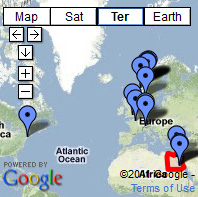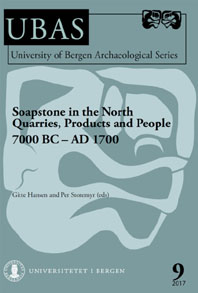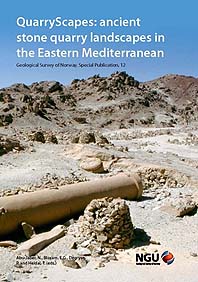Search this site
Welcome!
I work with the geoarchaeology of old stone: quarries, monuments, rock art. And I try to figure out about their weathering, and conservation using traditional crafts. I also burn lime the traditional way. My domestic services are managed through FABRICA, a registered Norwegian company established with good partners. On this website I publish articles on many aspects of cultural heritage. For the joy of old stone! Per Storemyr
Visit FABRICA’s website!

-
-
Recent posts
- Tradisjonell kalkbrenning i små, vedfyrte ovner. Erfaringer fra 6 brenninger i Tvedestrand
- Vinterbrenning av Brevikkalk. Med beskrivelse av kalkens geologi og egenskaper
- Middelalderkirker i stein: Hva mikroskopanalyse av kalkmørtler kan fortelle om historie, skader og mørtelvalg for restaurering
- Norwegian medieval lime mortars under the microscope
- Småskala kalkbrenning. Geologisk mangfold i kulturminnevernets tjeneste
Popular right now
Find posts by Google Maps

Follow on:

Follow on Facebook
SOAPSTONE! New book on its archaeology and history!

Book: The Stones of Nidaros Cathedral

Book: QuarryScapes

Get informed! State of the Art on natural stone today:

Tag Archives: experimental archaeology
Burning sea shells to make quicklime
Burning sea shells to make quicklime once was a great tradition in the North-Atlantic region. In Millstone Park, Hyllestad (W-Norway), we have built two limekilns, reviving old lime burning traditions, involving craftspeople, volunteers and the public. Recently we burnt sea shells to make lime paint and mortar! Read about the experiment in a new poster and web article. Continue reading
Posted in New projects, New publications, Uncategorized
Tagged experimental archaeology, Hyllestad, lime, lime burning, limekiln, Millstone Park, scallop, sea shell
2 Comments
Tusen år med brytning av kleberstein tok nettopp slutt. En historie om mekanisering og globalisering. Og om å gjenoppdage gammelt håndverk
Det er ytterst vanskelig å skaffe kleberstein til restaurering av Norges middelalderkirker. Til og med avisene har fått det med seg. Ved Nidarosdomen, Stavanger domkirke og i Bergen klør man seg i hodet: Det finnes ingen kleberbrudd i drift i Norge! De har blitt offer for globalisering. Hva er redningen? Kan man lære av hvordan kleberstein ble tatt ut manuelt i gamle dager? Kan man låne kunnskap fra et tilgrensende fagområde, nemlig bruk av kalkmørtel? De gamle bygningene trenger også sårt til god kalkmørtel! Problemet har vært at kunnskap om gammel kalkproduksjon har lagt nede i mer enn 50 år. Men nå produseres det brent kalk som aldri før i små «middelalderovner». Håndverket har blitt aktivt vekket til live gjennom eksperimentell virksomhet. Støttet av kulturminnevernet. Kan vi også vekke det gamle steinbryterhåndverket til live igjen? Til glede for restaurering? Continue reading
HOTMIX! Nybrent Hyllestadkalk leskes og testes som restaureringsmørtel på Stavanger domkirke
Endelig i gang med hotmix! Med lesking og testing av nybrent Hyllestadkalk til bruk i mørtel for restaurering. Som mange vil huske, brant Norsk Kvernsteinsenter lokal marmor i en nybygd «middelalderovn» i Hyllestad sist juni, et prosjekt støttet av Riksantikvaren. Planen er å leske og teste brentkalken på flere restaureringsprosjekter i Norge, bl.a. på Selja klosterruiner og Stavanger domkirke. Sidene jeg regelmessig jobber sammen med kollegaer i Stavanger, har vi nå gjort flere tester på domkirken med George Murphy og Bjørn Idland, som er restaureringsmurere ved Arkeologisk Museum (UiS). Det er ikke lett å leske kalk som er brent på tradisjonell måte. For det vil alltid være halvbrente og ubrente biter i slik kalk. Akkurat som i middelalderen. Vi lesket kalken på tre ulike måter, og det var liten tvil: tradisjonell hotmix ga det foreløpig beste resultatet! Continue reading
Posted in Monument conservation, New projects, Norway
Tagged experimental archaeology, lime burning, lime mortar, limekiln, marble
1 Comment
Experimental archaeology: Building a “classic”, intermittent limekiln and burning marble at Millstone Park, Hyllestad, Western Norway
It took us about six months: Building a cylindrical limekiln of the classic Roman/Medieval type with local materials only – stone rubble and clay. In June this year, we built the firing chamber and filled the kiln with 2.5 tons of local marble, covered the kiln with clay on a layer of spruce branches and started burning. Five days and five nights with much of the local community involved! Here’s an extended photo story of the project – the first of its kind in Norway. The quicklime (burnt marble) will be tested at Selja medieval monastery and other restoration projects in Norway. Thanks to all paid and volunteers and support from The ruin restoration programme of the Norwegian Directorate for Cultural Heritage, as well as Hyllestad Municipality! The project was carried out by The Norwegian Millstone Centre/The Museums in Sogn og Fjordane County. Continue reading
Posted in Marble, Monument conservation, New projects, Norway
Tagged experimental archaeology, Hyllestad, kalkbrenning, kalkovn, lime burning, limekiln, marble
13 Comments
Burning rock! An update for German-speaking readers
Recently I posted a preliminary report on our successful experiments with fire setting in the Melsvik Stone Age chert quarries in Northern Norway. For some curious reason German-speaking readers were not able to watch the attached video of the experiments, perhaps due to country-specific copyright infringements related to the music following the video. “Ring of Fire” by Johnny Cash is, sadly, obviously not for all! In this post there is a link to another version of the video, this time without good old Johnny. And there is more for my German-speaking readers; link to a recent article in Spiegel Online, based on my original story. The fire setting experiments were carried out within the Melsvik archaeological rescue project/excavations, headed by Anja Roth Niemi of the University Museum at Tromsø Continue reading
Posted in Archaeology, New projects, Norway, Old quarries
Tagged Alta, chert, experimental archaeology, firesetting, Melsvik, Norway, quarry
2 Comments
Burning rock! Experiments with fire setting at the Stone Age Melsvik chert quarries in Northern Norway
In the Melsvik Stone Age chert quarries near Alta in Northern Norway there are dozens of extraction marks that are difficult to explain by other ancient techniques than fire setting. Hence within the Melsvik archaeological project, run by the University Museum of Tromsø, last week we experimented with fire in order to substantiate that it actually formed an important method of breaking loose small and big pieces of stone. The idea was that it is not necessary with big fires and high temperatures, but that small, controlled “bonfires” are enough to create high shear stress and cracking. In this way high temperatures greatly reducing the quality of the chert for tool making are avoided. It works! Here’s a preliminary report with video. Continue reading
Posted in Archaeology, New projects, Norway, Old quarries
Tagged Alta, chert, experimental archaeology, firesetting, Melsvik, Norway, quarry
20 Comments
Experimental archaeology: The traditional way of quarrying soapstone
Experimental archaeology in old building stone quarries is a rare activity. But not so for Norwegian stone carver Eva Stavsøien. She asked herself how soapstone was extracted in the Middle Ages. Bringing handmade pickaxes, she went to an abandoned quarry … Continue reading
Posted in Archaeology, Norway, Old quarries
Tagged experimental archaeology, Nidaros Cathedral, Nidarosdomen, Norway, quarry, soapstone, Trondheim
Leave a comment

